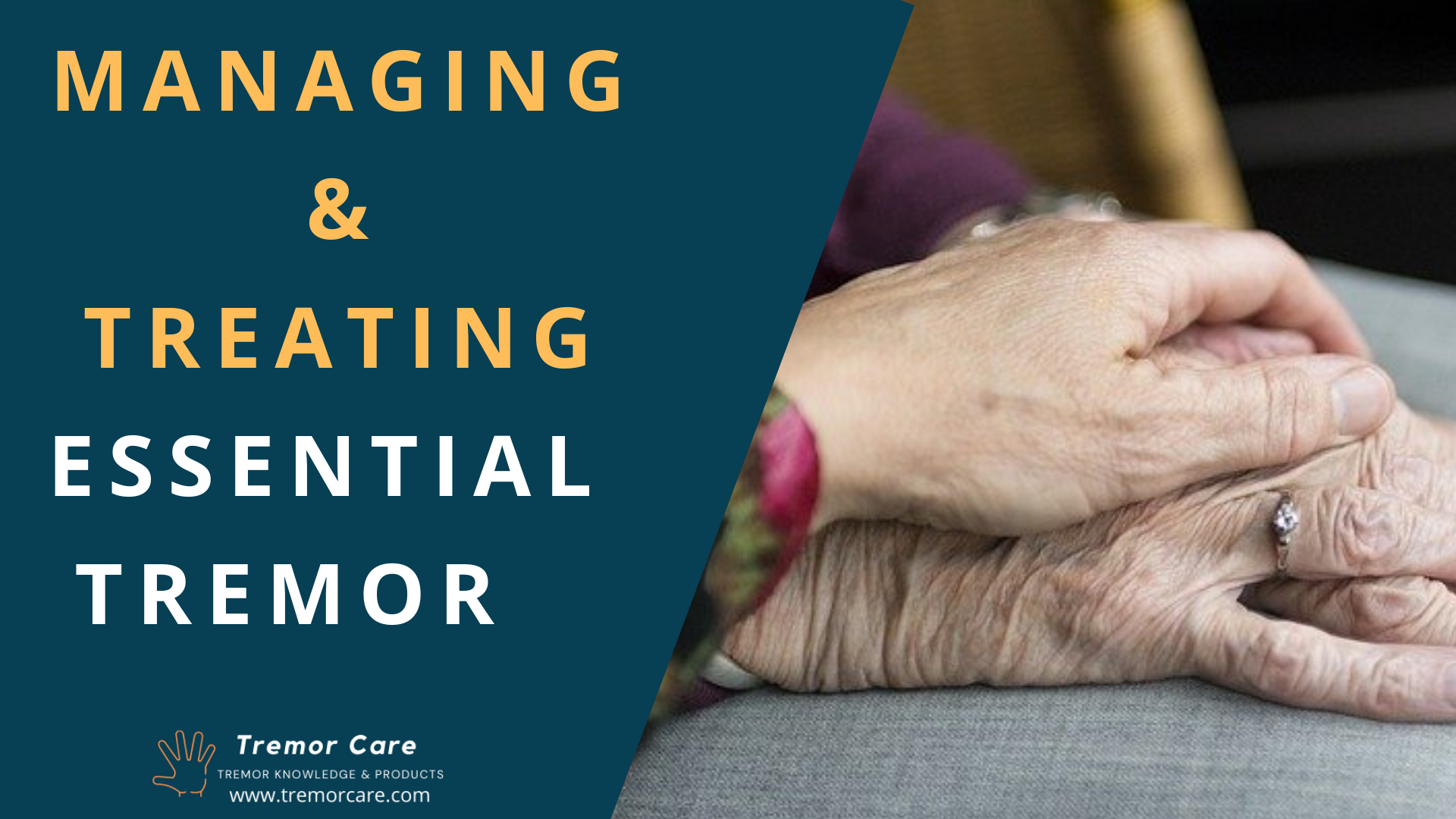People with essential tremor often rely on medications. But there are some other ways that may also help to reduce the tremor. So let’s learn here also the other ways of managing and treating an essential tremor.

Essential tremor is a brain disorder that causes uncontrollable and rhythmic shaking of hands. It usually appears on one hand and then gradually affects the other one. Besides hands, the tremor can also affect other body parts like head, tongue, and jaw.
Although essential tremor is not a life-threatening condition, if not managed properly, it can get worse over time and severely affect the patient’s quality of life.
Here, we have discussed the 5 main ways of managing and treating an essential tremor. One should take into account that these methods are symptomatic treatment, meaning that they will not cure the tremor but rather relieve the complications associated with it.
1. Behavioral Techniques
This is especially recommended for those who have mild tremor and usually don’t need medication. Researchers think that adopting certain behavioural changes can help to reduce the tremor.
These changes include:
- Staying away from emotional stress
- Avoid drinking caffeinated and alcoholic drinks
- Avoid using frequently the affected hand for writing, drinking, and eating
- Avoid taking certain drugs like antidepressants, valproate, and lithium.
2. Physical Therapies
Like behavioral techniques, physical therapies can also be effective in people with mild tremor. However, doctors usually recommend physical therapies along with medications.
Physical therapies mostly include hand exercises that are easy to perform and do not require special equipment. These exercises include:
- Holding a spongy or rubber ball for a few seconds (3-4 seconds) in hand and squeeze it. This should be repeated for a few minutes.
- Flick the hand up and down. This should be performed for all your fingers.
- Flex the wrist by keeping the hand down and then extend it by pulling it up. Do it 15 times and repeat it 3 times.
- Holding a pencil in the hand and spinning it in between the fingers.
- Finger thumb tapping.
- Supination and pronation of both hands.
- Spreading hand fingers using rubber band.
These exercises help to increase dexterity, flexibility, and strength of hands. They can be performed anytime and anywhere.
Please check our blog about the 7 most effective hand exercises for hand tremor for more detail about each of these hand exercises.
3. Drug Therapy
This is the most effective way of dealing with essential tremor. Although drug therapy cannot completely cure the tremor, it certainly helps to relieve it.
Some patients use drug therapy as an intermittent treatment option. They take the prescribed drugs as needed. For example, the patients take the drugs at low doses to relieve the tremor for a certain amount of time. They often consider taking drugs to avoid discomfort in social gatherings or formal meetings.
But in the majority of patients, drug therapy is used as long-term suppressive therapy. The most commonly prescribed drugs are propranolol and primidone. Propranolol is a beta-blocker that is used as first-line therapy. Primidone is an anti-epileptic drug and is prescribed when a patient is not responding to primidone. In some cases, a combination of both drugs is used to control the tremor. When both drugs fail to improve the tremor, a drug called Botox is used in the form of an injection.
Other drugs used to treat essential tremor include benzodiazepines, gabapentin, and zonisamide.
4. Surgical Approach
This approach is considered as the last option in dealing with essential tremor. This is often recommended for those selected patients who have severe tremor not adequately controlled by medical therapy.
It involves a surgery during which electrodes are installed inside the brain of a patient. Those electrodes are targeted to brain regions involved in the controlled movement of the body. The electrodes produce a current that helps to get rid of the abnormal brain activity that caused the tremor. The current is adjusted with the help of a stimulator (a pacemaker-like device) that is placed in the upper chest area.
The surgery is expensive and not everyone can afford it. Also, it comes with complications including infection, bleeding in the brain, and potential risk of hemorrhage.
Still, it is considered to be very effective and become a routine treatment for patients who are suffering from severe form of essential tremor.
5. Assistive Devices
There are numerous assistive devices designed for people with essential tremor. Although these devices cannot treat the tremor, they can help to decrease the tremor’s effects, especially during eating, drinking, and writing. Some of these devices are already available on the market while others are in their prototypic stage.
Here is the list of assistive devices that are available on the market and should be used for essential tremor:
- HandSteady drinking cup
- Liftware stabilizing spoon
- Emma wristwatch
- Adaptive pens and pencils
- Eating utensil sets
- Adaptive gloves
There is an error on this site:
Propranolol is the beta-blocker, whereas Primidone is the anti-epileptic drug.